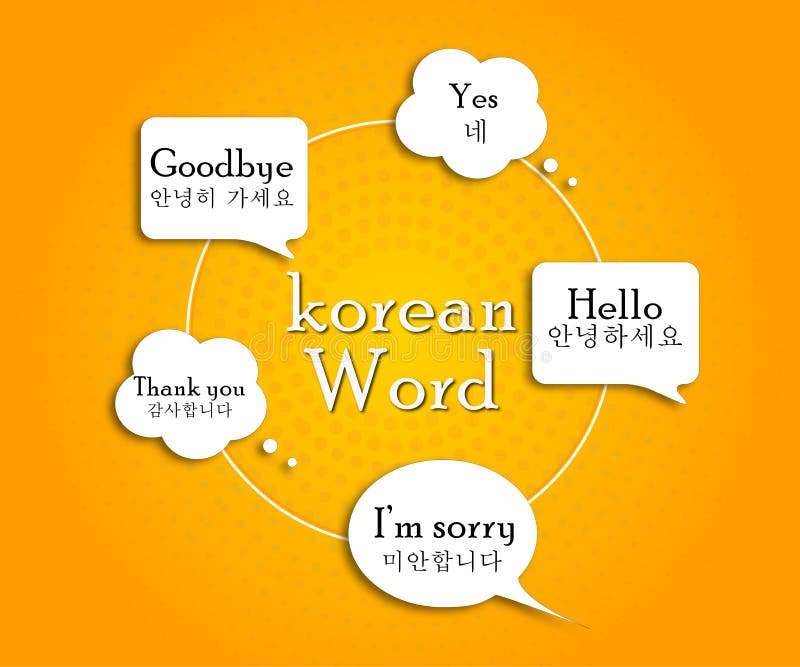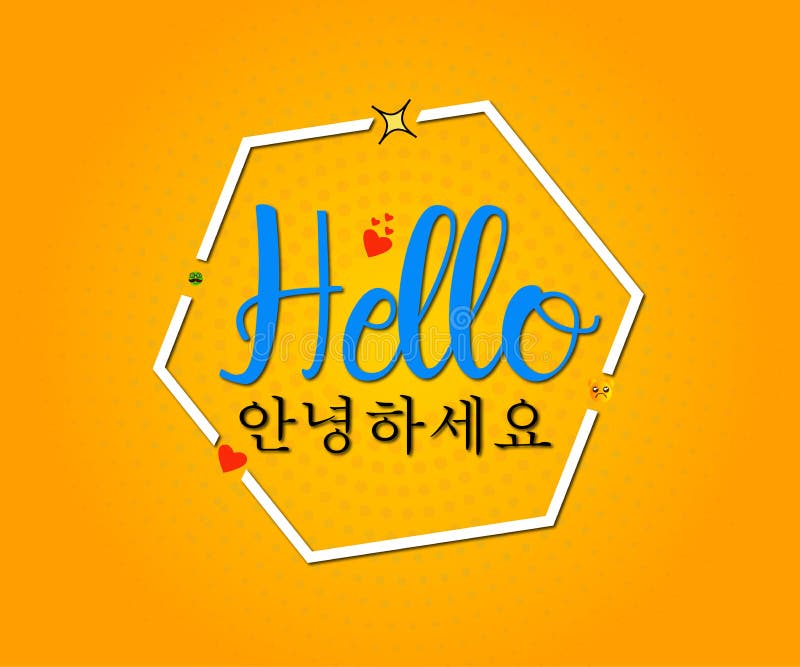Hello In Korean Language: A Comprehensive Guide To Mastering Korean Greetings
Apr 09 2025
**Ever wondered how to say hello in Korean language? Well, buckle up, because we’re diving deep into the world of Korean greetings, and trust me, it’s more exciting than you think. Saying hello in Korean is more than just a simple word; it’s a doorway to a rich culture, a vibrant society, and a language that’s rapidly gaining global attention. Whether you’re planning a trip to Korea or just want to impress your Korean friends, mastering the basics of Korean greetings is your first step toward fluency. So, let’s get started and make sure you’re saying hello like a pro!
Learning how to say hello in Korean might seem like a small task, but it opens up a world of possibilities. Korean culture is steeped in tradition, and language plays a significant role in maintaining these traditions. From formal settings to casual hangouts, the way you greet someone in Korean can tell a lot about your understanding of their culture. So, whether you’re a language enthusiast or just curious about the Korean language, this guide will help you navigate the ins and outs of Korean greetings.
But why stop at just saying hello? Korean greetings are diverse, and they reflect the unique social hierarchy that exists in Korean society. Understanding this hierarchy and learning how to use greetings appropriately can enhance your communication skills and show respect for the culture. So, without further ado, let’s jump into the wonderful world of Korean greetings and see what makes them so special.
Read also:Discover The Enchanting Greystone Mansion A Hidden Gem In Beverly Hills
Why Learn Hello in Korean Language?
Learning how to say hello in Korean language might seem like a small step, but it’s one of the most important things you can do when starting your journey into the Korean world. Korean greetings are more than just words; they’re expressions of respect, politeness, and cultural understanding. If you’re planning to visit Korea or interact with Korean speakers, knowing how to greet them properly can make a huge difference. Plus, it’s always cool to surprise people with a well-placed “Annyeonghaseyo”!
Here’s why you should take the time to learn Korean greetings:
- It shows respect for Korean culture.
- It helps you connect with Korean speakers on a personal level.
- It’s a great conversation starter.
- It’s fun and rewarding to learn a new language.
And don’t worry, we’ll break it down for you so it’s super easy to learn. So, let’s move on to the next section and start exploring the different ways to say hello in Korean!
Basic Korean Greetings: Start with Hello
When it comes to Korean greetings, there’s no better place to start than with the classic “Annyeonghaseyo” (안녕하세요). This is the formal way to say hello in Korean language, and it’s perfect for most situations. Whether you’re greeting a stranger, a colleague, or someone older than you, this greeting is safe and respectful. But did you know there are other ways to say hello in Korean depending on the context?
Casual vs Formal Greetings
In Korean culture, the level of formality matters a lot, especially when it comes to greetings. Here’s a quick breakdown:
- Annyeonghaseyo (안녕하세요): Formal greeting used in most situations.
- Annyeong (안녕): Casual greeting used among friends or people of the same age.
Choosing the right greeting depends on the relationship between you and the person you’re addressing. If you’re unsure, it’s always safer to go with the formal version. Trust me, Koreans will appreciate your effort!
Read also:Princess Diana Death Theories Exploring The Truth Behind The Tragedy
How to Pronounce Hello in Korean
Pronunciation is key when learning any new language, and Korean is no exception. Saying hello in Korean language might look intimidating at first, but once you get the hang of it, it’s pretty straightforward. Let’s break it down:
“Annyeonghaseyo” (안녕하세요) is pronounced as “an-nyeong-ha-se-yo.” Here’s how to say it:
- “An” sounds like “on” in English.
- “Nyeong” sounds like “nyung” with a soft “n” sound.
- “Ha” sounds like “ha” in English.
- “Se” sounds like “say.”
- “Yo” sounds like “yoh.”
Practice saying it out loud a few times. The more you practice, the more natural it will sound. And remember, Koreans are super forgiving when it comes to pronunciation, so don’t be afraid to give it a try!
When to Use Different Korean Greetings
Knowing when to use which greeting is crucial in Korean culture. Here’s a quick guide to help you navigate the world of Korean greetings:
Formal Greetings
Use formal greetings in situations where respect is important, such as:
- Meeting someone for the first time.
- Talking to someone older than you.
- Addressing someone in a professional setting.
In these situations, “Annyeonghaseyo” (안녕하세요) is your go-to greeting. It’s respectful and shows that you understand the importance of formality in Korean culture.
Casual Greetings
Casual greetings are perfect for informal settings, such as:
- Talking to friends or family members.
- Addressing someone younger than you.
- Being in a relaxed environment.
In these cases, “Annyeong” (안녕) is the way to go. It’s friendly and shows that you’re comfortable in the situation.
Advanced Korean Greetings Beyond Hello
Once you’ve mastered the basics of saying hello in Korean language, it’s time to take your greetings to the next level. Korean has a wide range of greetings that can be used in different situations. Here are a few examples:
Good Morning
“Joh-eun achim-ipnida” (좋은 아침입니다) is how you say “Good morning” in Korean. This greeting is polite and can be used in both formal and informal settings. It’s perfect for starting your day on a positive note.
Good Afternoon
“Joh-eun hae-eum-ipnida” (좋은 해입니다) is the Korean way of saying “Good afternoon.” This greeting is less common than “Good morning,” but it’s still a great way to show respect and politeness.
Good Evening
“Joh-eun bang-ippnida” (좋은 밤입니다) means “Good evening” in Korean. This greeting is perfect for evening meetings or social gatherings.
Learning these advanced greetings will not only impress your Korean friends but also show that you’re serious about mastering the language.
Cultural Insights: The Importance of Greetings in Korea
In Korean culture, greetings are more than just words; they’re a reflection of respect and social hierarchy. Understanding this cultural aspect is crucial when learning how to say hello in Korean language. Here are a few insights into why greetings are so important in Korea:
Respect for Elders
Korean culture places a strong emphasis on respecting elders. When greeting someone older than you, it’s important to use formal language and show deference. This is why “Annyeonghaseyo” (안녕하세요) is the preferred greeting in such situations.
Social Hierarchy
Social hierarchy plays a significant role in Korean greetings. The way you address someone can indicate your relationship with them and your understanding of their position in society. This is why it’s important to choose the right greeting depending on the context.
Politeness and Courtesy
Politeness is a key aspect of Korean culture, and it’s reflected in the way people greet each other. Using the right greeting shows that you value politeness and courtesy, which are highly regarded in Korean society.
Practical Tips for Mastering Korean Greetings
Now that you know the basics of saying hello in Korean language, here are a few practical tips to help you master Korean greetings:
- Practice regularly to improve your pronunciation.
- Use language learning apps to reinforce your knowledge.
- Watch Korean dramas or listen to K-pop to get a feel for how greetings are used in real-life situations.
- Don’t be afraid to make mistakes; Koreans will appreciate your effort.
Remember, learning a new language is a journey, and every step counts. So, keep practicing and have fun with it!
Common Mistakes to Avoid
When learning how to say hello in Korean language, there are a few common mistakes that beginners often make. Here’s what to watch out for:
Using the Wrong Greeting
Using a casual greeting in a formal setting or vice versa can come across as disrespectful. Always consider the context and choose the appropriate greeting.
Poor Pronunciation
Pronunciation is important, but don’t let it discourage you. Koreans are generally forgiving when it comes to pronunciation, so don’t be afraid to practice and improve over time.
Ignoring Cultural Nuances
Korean culture has many nuances that can be missed by outsiders. Take the time to learn about these nuances and incorporate them into your language learning journey.
Conclusion: Your Journey to Mastering Korean Greetings
Learning how to say hello in Korean language is just the beginning of an exciting journey into the world of Korean culture and language. From formal greetings to casual hangouts, mastering Korean greetings can open up a world of opportunities and connections. Remember, practice makes perfect, and every step you take is a step toward fluency.
So, what are you waiting for? Start practicing your Korean greetings today and see how it transforms your interactions with Korean speakers. And don’t forget to share your experiences with us in the comments below. Who knows, you might just inspire someone else to start their own language learning journey!


